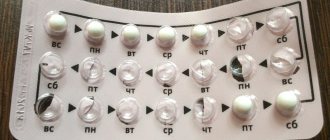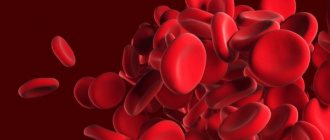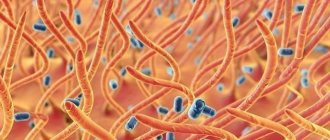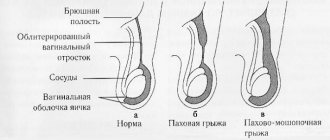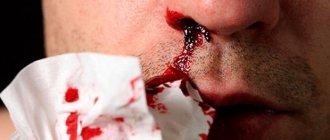Celestoderm is an ointment from the category of glucocorticosteroids, which is indicated for use against inflammatory skin pathologies. The course of therapy should not exceed 3-5 days, applied 1-3 times a day in a thin layer. The drug is also used in pediatric practice, but only from the age of six months. For burns, it is recommended to use Celestoderm-B cream with an antibiotic (gentamicin) for treatment.
The cost of Celestoderm-B ointment ranges from 232-323 rubles.
Indications for use
Inflammatory skin diseases sensitive to glucocorticosteroid therapy:
- contact and seborrheic dermatitis ;
- radiation dermatitis;
- eczema;
- solar dermatitis;
- neurodermatitis;
- exfoliative dermatitis;
- psoriasis;
- intertriginous dermatitis;
- anogenital itching.
Instructions for use Celestoderm-B (Method and dosage)
Celestoderm ointment, instructions for use
The ointment is used externally only. It should be applied to the affected areas in a thin layer up to three times a day, depending on the severity of the disease. To achieve the effect, in most cases, applying the ointment twice a day is sufficient.
Celestoderm cream, instructions for use
The cream is used externally only. It should be applied to the affected areas in a thin layer up to three times a day, depending on the severity of the disease. To achieve the effect, in most cases, applying the cream twice a day is sufficient.
Compound
Different forms of release of Celestoderm consist of different components. The cream for external use has the following composition: 1.22 mg betamethasone valerate, 1 mg gentamicin. Excipients: phosphoric acid (serves to create the required pH level), chlorocresol, sodium dihydrogen phosphate dihydrate (hydroxide), purified water, cetostearyl alcohol, liquid paraffin, soft white paraffin and macrogol cetostearate.
Celestoderm ointment in an aluminum tube has a similar composition, but is characterized by fewer auxiliary components. The main substances are betamethasone valerate (1 g of ointment contains 1.22 mg of the substance) and gentamicin (1 mg per 1 g of ointment), which is added in the form of sulfate. The auxiliary substances are two types of paraffin - soft white and liquid.
Overdose
Signs of overdose: excessive or prolonged local use of glucocorticosteroids can cause suppression of the pituitary and adrenal glands, which can cause the development of secondary hypofunction of the adrenal cortex and symptoms of hypercortisolism, including Cushing's syndrome .
Overdose therapy: symptomatic treatment. If necessary, monitoring and correction of electrolyte imbalance is recommended. Acute hypercortisolism is usually reversible. In case of prolonged exposure, slow withdrawal of corticosteroids .
Side effects
The use of the drug Celestoderm B can also cause undesirable reactions, most of which are manifested only by local changes in the projection of application.
These include:
- discomfort and burning;
- the appearance of dry skin;
- folliculitis (inflammation of hair follicles);
- pigmentation disorder;
- acne-like rash;
- dermatitis in the mouth area;
- skin allergic manifestations;
- skin maceration;
- development of secondary infection;
- formation of striae.
Regular or prolonged use negatively affects the condition of the skin: atrophy, hirsutism (male pattern hair) develops, and telangiectasia (dilated capillaries) occurs. Application on large areas of the skin causes steroid gastritis and asymptomatic gastric ulcers.
special instructions
If there is no effect of treatment within 14 days, then you need to consult a doctor to clarify the diagnosis.
If irritation or an allergic reaction is detected when using the drug, then treatment should be stopped and adequate therapy should be selected for the patient.
If a secondary bacterial or fungal infection develops, it is recommended to prescribe appropriate medications. If a rapid therapeutic effect cannot be achieved, then the use of glucocorticosteroids should be discontinued until all signs of infection are eliminated.
Any adverse reactions of systemic glucocorticosteroids , including adrenal suppression, can also be recorded when using local glucocorticosteroids , especially in children.
The absorption of local glucocorticosteroids into the systemic circulation is increased with their prolonged use, when treating large surfaces of the body or when using occlusive dressings, as well as when treating children.
Celestoderm-B cream and ointment are approved only for external use and are prohibited for use in ophthalmology.
The following adverse reactions were recorded in children receiving this drug: Cushing's syndrome , suppression of the hypothalamic-pituitary-adrenal system, growth retardation, increased intracranial pressure, and delayed weight gain. Signs of suppression of the adrenal cortex in children include: decreased cortisol in the blood, lack of response to activation by adrenocorticotropic hormone . Increased intracranial pressure can be detected by bulging of the fontanel, swelling of the optic disc and is accompanied by headache.
Reviews from doctors
Dermatologists characterize the drug as easy to apply and affordable. They describe a powerful effect on the main symptoms of skin inflammation. Doctors note that within the first days of use, itching goes away, swelling and redness decrease.
Celestoderm prevents the development of lichenification (thickening of the skin against the background of long-term allergic reactions), which is usually accompanied by dryness, cracking and discomfort in everyday life.
The drug is used only for local treatment, but can also have a systemic effect. Dermatologists warn against long-term use, unauthorized prescription of the drug, and uncontrolled application of Celestoderm in pediatric practice.
Analogs
Level 4 ATC code matches:
Gistan N
Sinalar
Avecourt
Mesoderm
Momederm
Betazon
Silkaren
Elokom
Flucinar
Sinaflan
Cutivate
Advantan
Betamethasone
Beloderm
Mometasone Furoate
Uniderm
Momat
Analogues of Celestoderm-B: Akriderm , Beloderm , Betliben , Soderm , Advantan , Sterocort , Metizolone , Cutivate .
Pharmacological properties
Pharmacodynamics
The active substance of the drug Celestoderm-B, betamethasone, has anti-allergic and anti-inflammatory properties, which is achieved by reducing vascular permeability, inducing the formation of lipocortins, which have anti-edematous activity, reducing the metabolism of arachidonic acid, inhibiting the release of inflammatory mediators and cytokines.
By means of its microdispersion in a non-greasy ointment/cream base, which is easily washed off, does not leave marks on clothing and is odorless, the drug is effectively penetrated into the skin and the rapid onset of its action.
During pregnancy and lactation
The safety of using the drug in pregnant women has not been established, so its use during pregnancy can only be justified if there are strict indications and under the supervision of the attending physician. The described remedy should not be prescribed to pregnant women in large dosages or for a long time.
It has not yet been clarified whether local glucocorticosteroids be excreted in breast milk, so breastfeeding or taking the drug should be stopped, taking into account the need for its use for the mother.
Hormonal or not?
In order to find out whether a drug contains hormonal components in its structure, simply read its instructions for use. The detailed structure of the drug is described there. The key element of the product is betamethasone valerate. It belongs to the glucocorticosteroids category of hormones.
Despite this, this drug is very actively used in dermatology and leaves positive feedback about its effectiveness and a small number of secondary phenomena.
Celestoderm-B price, where to buy
The price of Celestoderm-B ointment 30 g in Russia averages 300 rubles; in Ukraine, this form of release costs 190-210 hryvnia.
The price of Celestoderm-B cream 30 g in Russia is 300-325 rubles, in Ukraine this form of release costs 180-225 hryvnia.
- Online pharmacies in RussiaRussia
- Online pharmacies in UkraineUkraine
- Online pharmacies in KazakhstanKazakhstan
ZdravCity
- Celestoderm-B with garamycin cream 15gSchering-Plough Labo NV
RUB 466 order - Celestoderm B ointment 0.1% 30gSchering-Plough Labo NV
RUB 311 order
- Celestoderm B with garamycin ointment 15gSchering-Plough Labo NV
408 rub. order
- Celestoderm B with garamycin ointment 30gSchering-Plough Labo NV
RUR 519 order
- Celestoderm B ointment 0.1% 15gSchering-Plough Labo NV
RUB 207 order
Pharmacy Dialogue
- Celestoderm-B cream tube 0.1% 15g Bayer AG
RUB 248 order
- Celestoderm-B with garamycin cream tube 0.1% 30gShering-Plough
570 rub. order
- Celestoderm-B ointment tube 0.1% 30gShering-Plough
RUR 318 order
- Celestoderm-B cream tube 0.1% 30g Bayer AG/Shering-Plough
RUB 322 order
- Celestoderm-B ointment tube 0.1% 15g Bayer/Shering-Plough
RUB 229 order
show more
Pharmacy24
- Celestoderm B with garamycin 30 g cream Schering-Plough Labo N.V., Belgium
138 UAH order
PaniPharmacy
- Celestoderm B ointment Celestoderm-B ointment 0.1% 15g Belgium, Schering-Plough Labo
136 UAH order
- Celestoderm B ointment Celestoderm-B ointment 0.1% 30g Belgium, Schering-Plough Labo
199 UAH order
- Celestoderm with garamycin ointment Celestoderm-B with garamycin ointment 30g Belgium, Schering-Plough Labo
154 UAH order
- Celestoderm with garamycin cream Celestoderm-B with garamycin cream 30g Belgium, Schering-Plough Labo
151 UAH order
show more
Price
Celestoderm has a relatively low cost. You can purchase this medicine not only at pharmacy kiosks, but also on the manufacturer’s website. When purchasing a drug from online pharmacies, make sure that the site you choose has all the necessary certificates and licenses for selling medicines.
Celestoderm is presented on the pharmaceutical market in two forms - cream and ointment. The average cost of a thirty gram tube of ointment varies from two hundred eighty to three hundred fifty rubles. The price of a tube of cream of the same volume is three hundred and seventy rubles. The cost of a fifteen-gram tube of medicine varies from two hundred twenty to two hundred fifty rubles.

